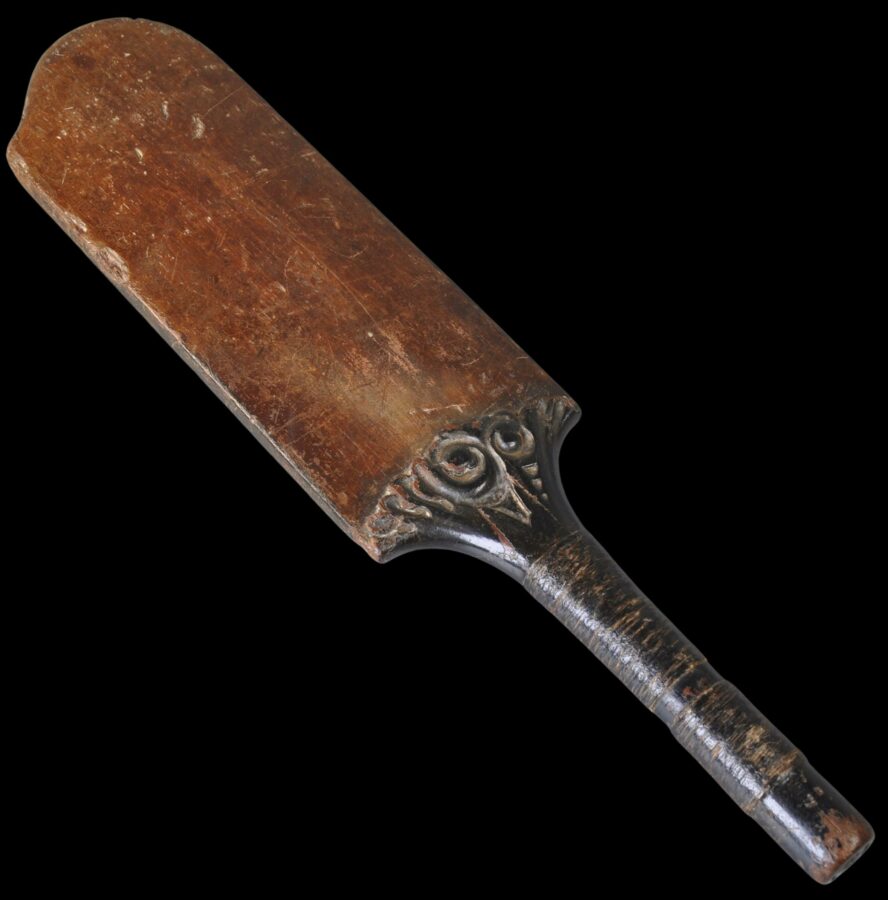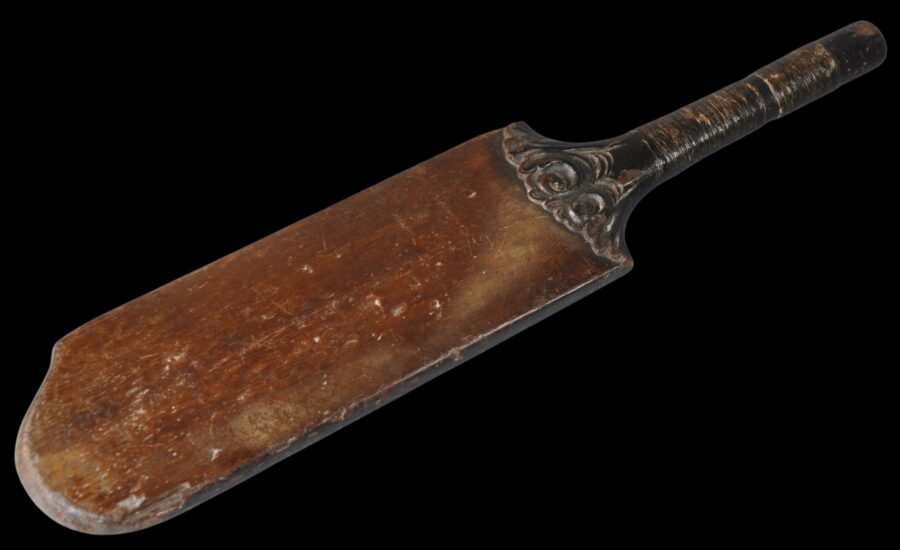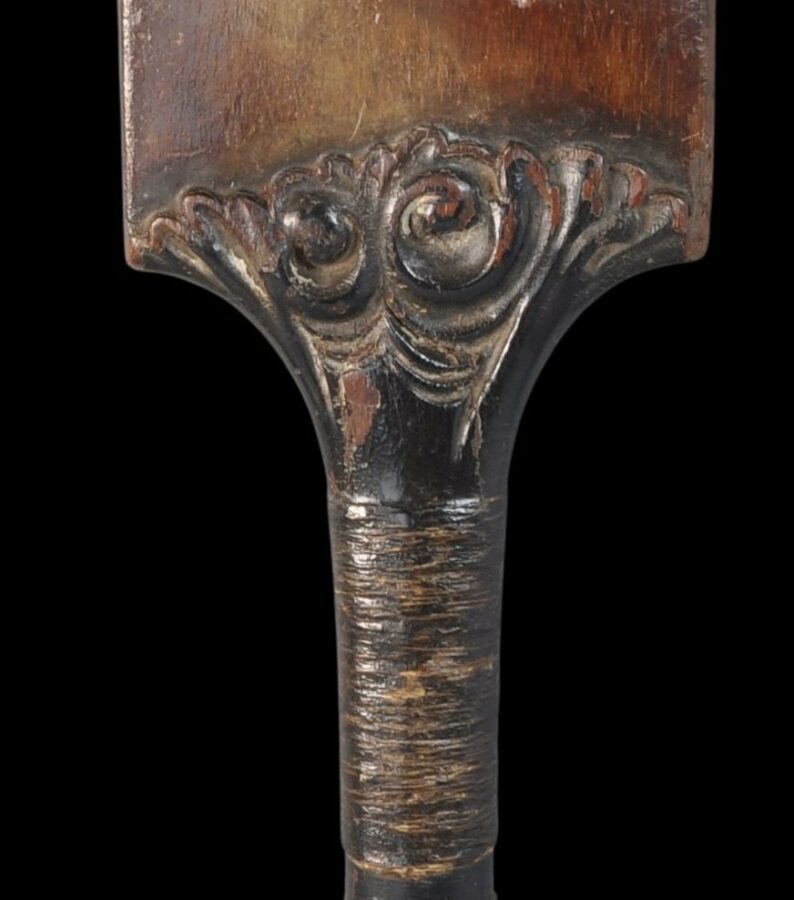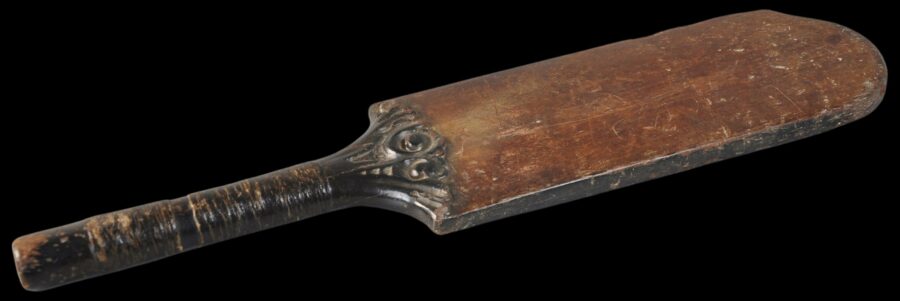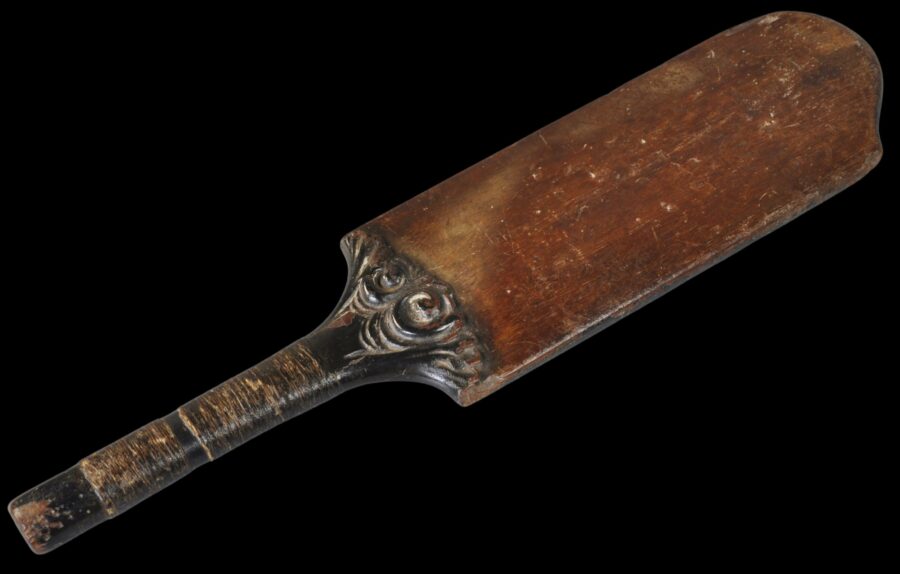Balinese Carved Wooden Rice Sheaf Paddle (Panaptapan)
Bali or Lombok, Indonesia
19th century
length: 37.9cm, width: 8.3cm, weight: 285; height including stand: approximately 43cm
Provenance
Art market, France
The paddle most likely was used n Bali or the adjacent island Lombok as a rice sheaf paddle. It is carved from a single piece of dark wood.
It is carved on both sides with a leafy flourish which Ramseyer (1977, p. 68) identifies by its Balinese name as as patera punggel.
The handle is encased in thin twine that has been covered in resin, thereby creating a proper grip.
Such a paddle was used to even up bundles of rice stalks, before the bundles were taken from the rice field, back to the village, where they would be dried and stored in rice barns and later threshed.
Rice sheaf paddles were used in the 19th century and into the 20th century, but eventually the need for them declined by the 1960s when new strains of rice were introduced to Bali and Lombok, which had much shorter stems and with the grains more loosely attached to the stalk. Thereafter, most rice was threshed in the fields rather than being stored on the stalk in rice barns.
A related similar example from the Tropenmuseum of the Netherlands is illustrated in Reichle (2010, p. 140).
The example here has a splendid patina.
The paddle is accompanied by an attractive custom-made, black metal display stand. Altogether, the paddle and stand are particularly decorative.
References
Ramseyer, U., The Art and Culture of Bali, Oxford University Press, 1977.
Reichle, N. (ed.), Bali: Art, Ritual & Performance, Asian Art Museum, 2010.


